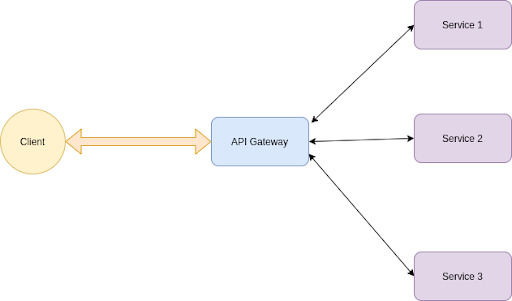Monolithic Applications: A Relic of the Past?

In software development, the monolith architecture has successfully seen the design and development of applications. Most unicorn companies in recent years started their journey using monolithic architecture. However, we’ve seen a significant change and adaptation of microservice architecture patterns in the last few years. The popularity of designing and developing applications using microservices is mainly because of scalability and increased productivity for larger teams and companies.
We are in the modern era where customer experience has become crucial for business success. So, those who provide a better customer experience win the market. To have a seamless experience, it’s evident that the application has to perform well, making microservices popular in recent years.
An important thing to note is that “Microservices” is not a silver bullet that can solve every problem. But, of course, microservices can solve some of the issues you face in software development. But does it make the monolithic approach obsolete and dead?
Feel free to use these links to navigate the guide:
- Monolithic Applications Defined
- Are Monolithic Applications Really Dead?
- Are Monoliths Suited for a Cloud-Native World?
- Best in Class Monolithic Application Monitoring
Monolithic Applications Defined
Monolithic is an architectural pattern of designing and developing a complete application as a single unit. For example, a traditional application will have a frontend, API, services, load balancer, and database. If you build everything together and deploy it on the server, that’s called a monolithic architecture, where services tightly couple together.
For example, this monolith application has different services, databases, and load balancers that connect together. Every client’s request goes through a load balancer and API, and services handle the business logic. Finally, you store the information in the databases.
Monoliths vs. Microservices
It’s crucial to choose the right architecture while designing and developing an application. However, we have also seen that many popular products started with monoliths and migrated to microservice architecture. You can say that it’s due to their business demand and scalability issues.
One of the main reasons to start with monolithic architecture is to avoid over-engineering early. But, you also need to consider the trade-offs while making this decision. If you ask the people who migrated from monolith to microservices, they will share how cumbersome and time-consuming the process was. So, it’s essential to make decisions based on the business requirements. To make that process more simple, we will compare the difference between monolith and microservices.
What Is Microservice Architecture?
Microservices is an architectural style of designing, developing, and deploying an application as a collection of loosely coupled, independently deployable, highly maintainable, and testable services.
It enables quick, frequent, and reliable delivery of large complex applications. Moreover, from an engineering perspective, microservices are an easier way to develop since the scope of each service is small. But there are some downsides noted later in this blog.
Here, we have a microservice architecture pattern in which each functionality is separated as a service. Each service does a specific job that connects via an API gateway.
For example, consider that you are building an e-commerce application. Such an app will have functionalities such as listing all products, adding products to a cart, checking out an order, and payments.
When building it using the microservices architecture, we treat each of these functionalities listed above as a microservice. They are developed and deployed independently and are integrated using an API gateway.
Monolith Advantages
Here are some advantages that monoliths offer over other types of architecture.
Ease of Development
In the early stage, all that matters is to develop a quick and functional version of the product. If that’s the case, then monolith has a considerable advantage. Monoliths enable you to develop and launch the initial version of the product quickly.
Best Suited For Small Teams
The monolith is the right choice when your team is small and wants to get things done quickly without worrying about infrastructure, scalability, etc.
With a small team of developers to design and build a product, you want to utilize resources in the best way possible. At that time, it’s wise a choose a monolith to build a functional product with available resources. Some companies even choose a single programming language to build their whole product, enabling a developer who works on the client-side to also work on the server-side of the product.
Less Complexity
Designing, developing, and deploying a monolith application is less complex. You don’t need to manage complex infrastructure, resources, etc. Instead, it helps focus on the business requirements and build a better version of a product and its features.
Setting up and monitoring a distributed system can be expensive. Therefore, experts recommend choosing distributed system over a monolith only if the application requires such complexity. On the other hand, you can deploy and maintain a monolith without any hassle.
Easier to Debug and Test
Fixing and debugging a monolith application is straightforward. Since everything’s developed together, it will have a central logging system for the entire application. Therefore, debugging and fixing issues is less time-consuming.
In a monolith, you can quickly run your application in different environments without the need to run multiple services at one time. In addition, setting up and debugging a monolith application in a machine is far easier than microservices.
Less Cross-cutting Concerns
One of the significant difference between monolith and microservice applications are cross-cutting concerns. For example, authentication, caching, and logging integrate into a single system unit, whereas, in microservices, you need to manage each service. So, a monolith doesn’t require extra effort to maintain, whereas, in microservices, it’s a concern.
Disadvantages of Monolith architecture
On the flip side, here are some disadvantages of using the monolith architecture.
Tight Coupling
Monolithic applications tightly couple to each other. For example, consider an e-commerce application with different functionalities (as mentioned before). The payment and product catalog services connect tightly with each other. So, if something goes wrong with a specific functionality, it can affect the whole application and crash it. Moreover, once the codebase grows, adding a new feature or scaling the service is time-consuming and cumbersome.
Reduced Scalability
As discussed above, scalability is an issue in monolithic applications, and it’s challenging to scale a specific service or set of APIs in a monolithic application. So, you need to scale the entire application, which can be a resource-consuming process for the business.
Dependency Between Services
In a monolith, services depend on each other. So, changes in particular services can affect other services. For example, let’s say that you have a user management service and checkout service for an e-commerce application. Checkout service depends on the user entity. After some time, you change the user entity, which can affect the functionality of the checkout service. So, you need to fix it to make it work.
Once the application starts to grow, you will get many scenarios like this in monolith applications which can badly affect the developer’s productivity and take time to build new features and changes.
Microservices Advantages
Now, let’s take a look at some of the advantages of microservices.
Autonomy
Designing and developing a particular service in a microservice architecture will be independent, and it will not affect the development and deployment of other services and their functionalities. So, for example, if a team is working on a microservice, the feature they develop and deploy won’t affect other services.
Agility
Since developing a specific microservice is independent of each other services. It lets you choose a tech stack and programming languages for the particular service. Several factors can be involved, such as business requirements, the team’s familiarity with the specific tech stack, etc.
Developing an application using microservices makes the process quick and efficient. For example, suppose you have good resources to build a scalable product from scratch. Then, each team can work on the different functionality in parallel. So, developing a scalable product in a quick time is possible.
Scalability
One of the main advantages of building an application using microservices architecture is scalability. You can scale a particular service independently, and therefore, it saves a lot of time and resources for the application.
High Reliability
Microservices are highly reliable. Even if a microservice crashes, it doesn’t crash the entire application, unlike monolithic applications. A monolithic application can crash the whole application, but it will not be the case in the case of microservice.
Disadvantages of Microservices
Here are some of the disadvantages of using a microservices-based architecture.
Complexity
Designing and developing microservices are complex. It can be challenging and require significant effort to design a proper distributed system. If not done correctly, it can end up as a distributed monolith.
Time-consuming Process
Even though developing a particular service is more straightforward, it takes a lot of time and resources to build an entire application. A product usually needs 10-50 services for its application, depending on its requirements, and it takes a lot of effort and resources to get to that stage.
Cross-cutting Concerns
There are always cross-cutting concerns with microservices. For example, each microservice needs validation to verify that the user accessing the service is authorized. You need to handle this scenario to make the application secure and resilient. Also, functionalities such as logging and caching across the distributed system are a concern.
Complex Integration and Deployment
Microservices have their operational complexity and integrations. It takes time, effort and resources to manage and integrate deployments of microservices. Even if you can set up the initial system, it can get more complex once the application grows.
Are Monolithic Applications Really Dead?
With the continuous evolution of microservice architecture, you might think that monolithic architecture is outdated and inefficient. But, monolithic can be the best option based on your application requirement. There are several factors involved in selecting the architecture for your application.
Team Size
If your team is small and you want to build an application quickly and efficiently, then monoliths are one of your best options. When you have a budget, a tight deadline, and a small team of developers, it’s wise to choose a monolith than microservices because you can constantly improve on the software aspect of the business, not the other way around.
There are low startup costs and lower development complexity, and it requires fewer resources to develop and maintain the application.
Business Growth
One of the mistakes that happen while designing an application is over-engineering. You might think that choosing microservice architecture is the right way to go as a startup with a great product vision, but there are good chances that you will outgrow it quickly. With an increase in customers and room for innovation, you might soon start to feel the architecture limiting your freedom.
So, it’s wise to decide whether to go with microservices or monolithic architecture based on your requirements and not by trends or popularity.
Are Monoliths Suited for a Cloud-Native World?
Cloud-native is an approach to building and deploying an application by leveraging cloud services. It is important to note that a lot of discussion around cloud-native is usually focused on microservices. But, cloud-native monoliths are still valid. You can build a monolithic application in a cloud-native manner.
For example, if your application has authentication, logging, caching, etc., instead of handling those functionalities by yourself, you can leverage cloud services. To be more precise, you can use a cloud-based authentication service such as AWS Cognito instead of authenticating natively from your application. At the same time, you can use AWS Cloud Watch to log your app’s events and performance.
Best in Class Monolithic Application Monitoring
Microservices are gaining traction, and companies are adapting to them well. Microservices are a small section of business logic that you can develop, deploy, and scale independently. On the other hand, monolithic applications are developed, deployed, and scaled as a whole. So companies migrate from monolith to microservice by considering the scalability criteria.
However, it all drills down to business requirements. There’s no one solution to solve every problem, and there are always going to be tradeoffs. So, a monolith is still a valid, relevant choice in the modern scenario. But, you need to make sure of the approach you will employ while designing and developing a monolithic application.
The way you design and develop a monolith has evolved a lot in recent years. Nowadays, there are a lot of great libraries and services to build robust and resilient monolithic applications. For example, monolithic application monitoring has picked up quite much recently. It has become essential to follow and monitor your monoliths using relevant services and products. One of the greatest examples in this category is Scout APM. Feel free to check out the tool with a free 14-day trial!







